Abstract
To produce antigens susceptible to raise antibodies for resorcylic acid lactones, the 6′-carboxymethyloxime derivatives of zearalenone and zearalanone were bound to bovine serum albumin. Pigs could be immunized by using these antigens, the best titer in antibodies being obtained with the zearalenone antigen. The porcine antibodies were specific for the resorcylic acid lactones of structural resemblance with zearalenone. This specificity made the antibodies usable for a radioimmunoassay of zearalenone and zearalanol, which may be found in human and animal sera. The range of the assay was between 0.25 and 10 ng. The limit of detection was 5 ppb (5 ng/ml) in human serum.
Full text
PDF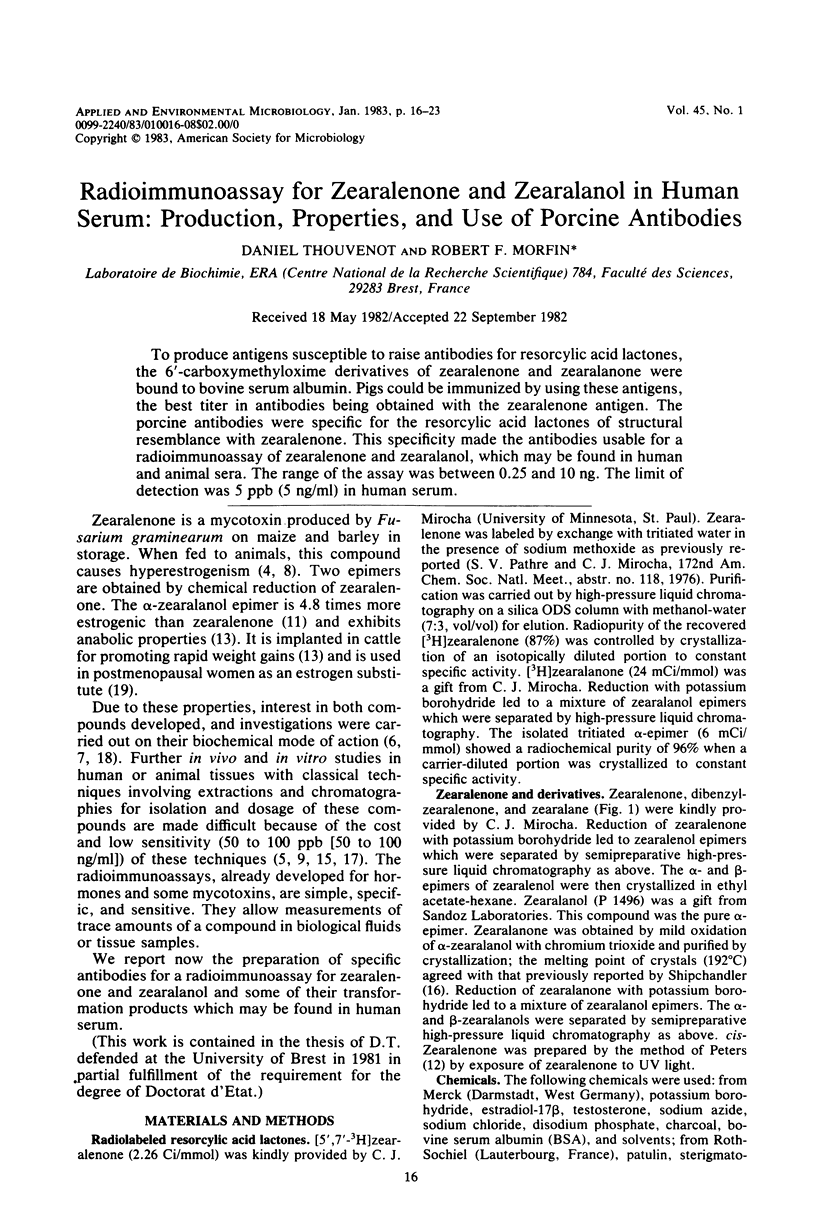
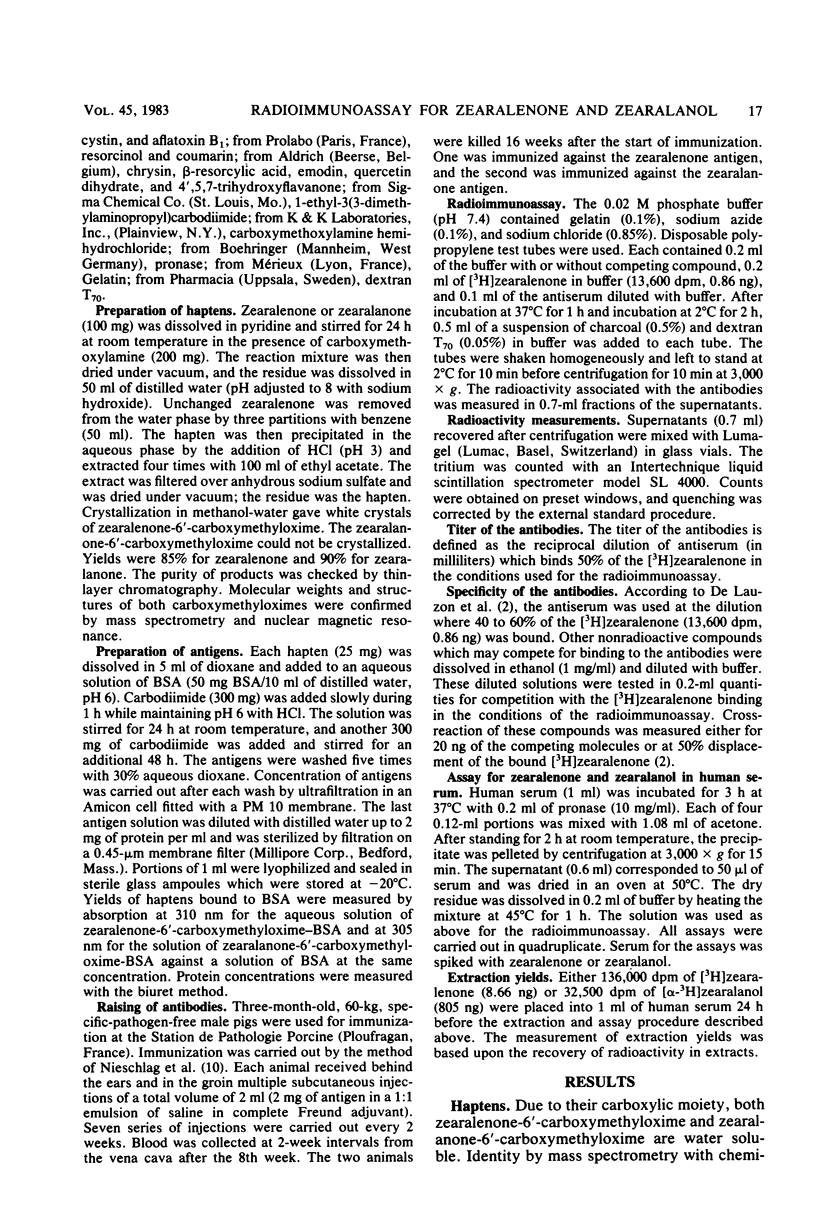
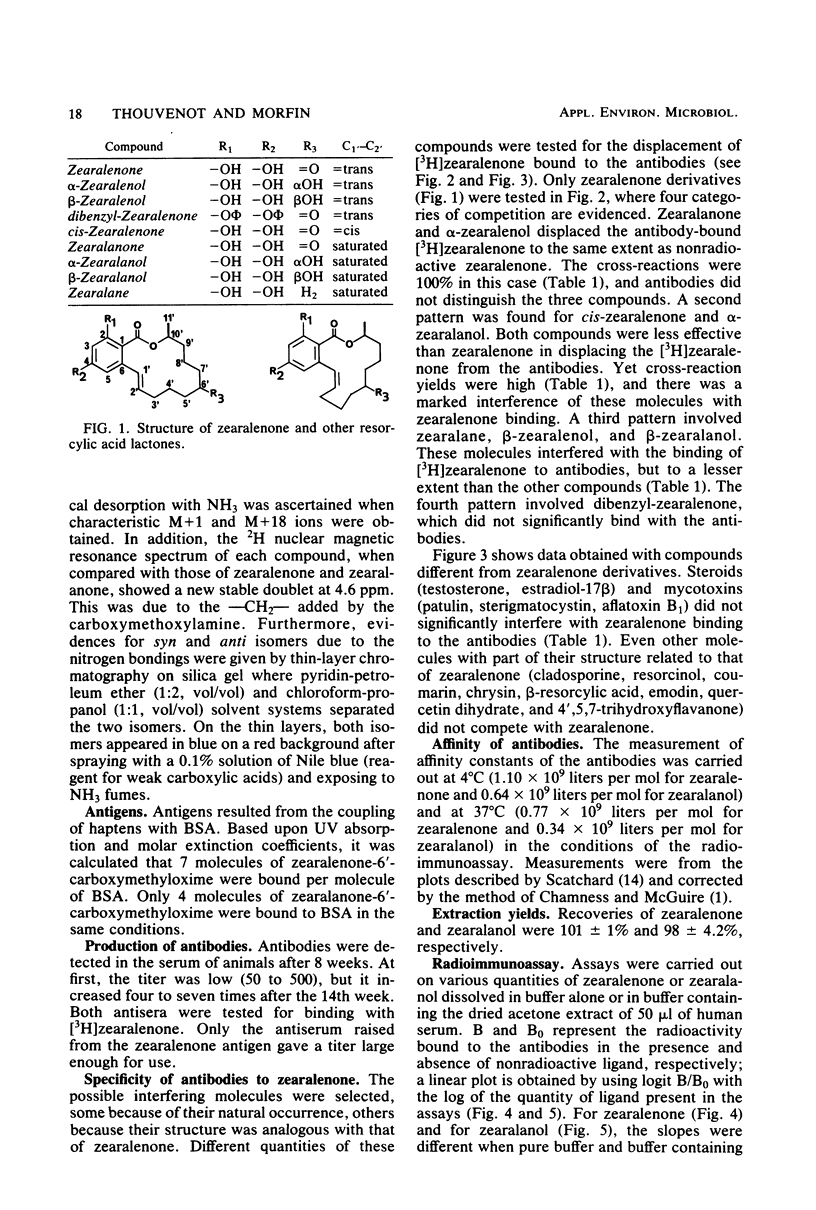
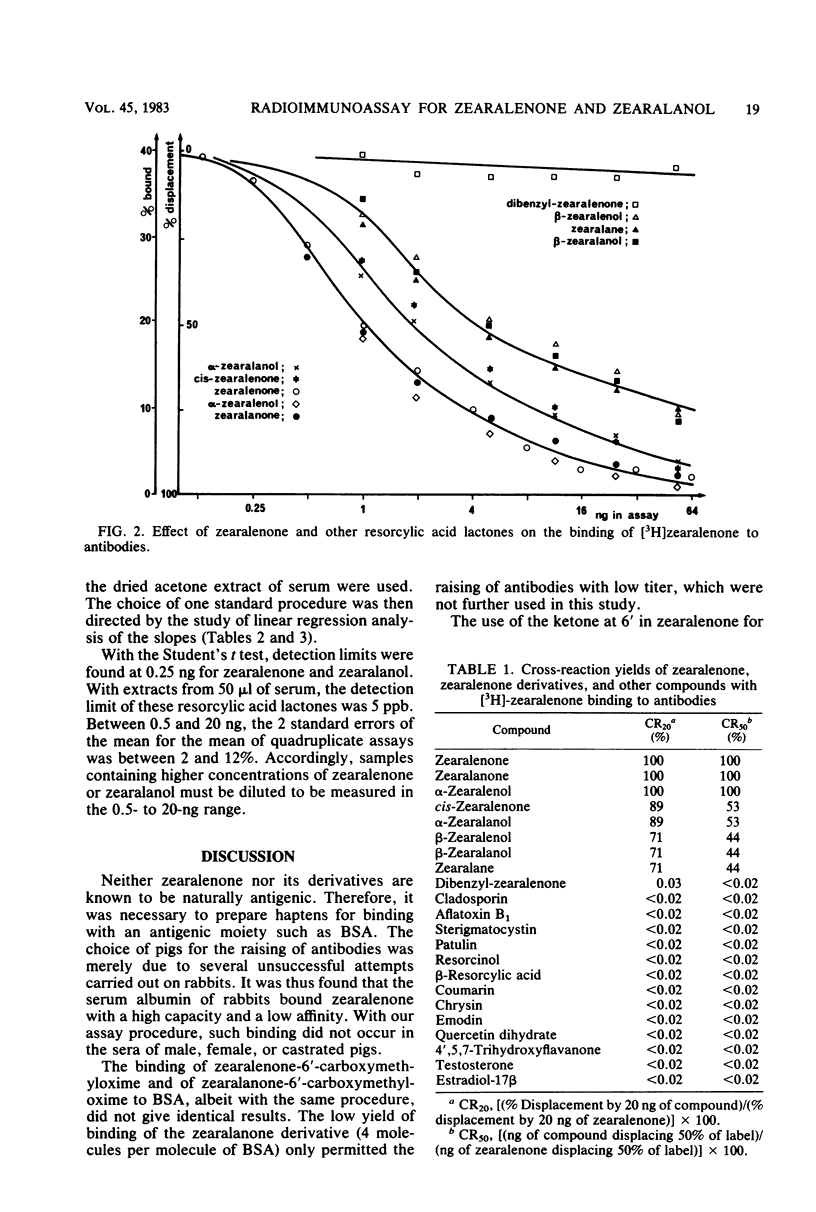
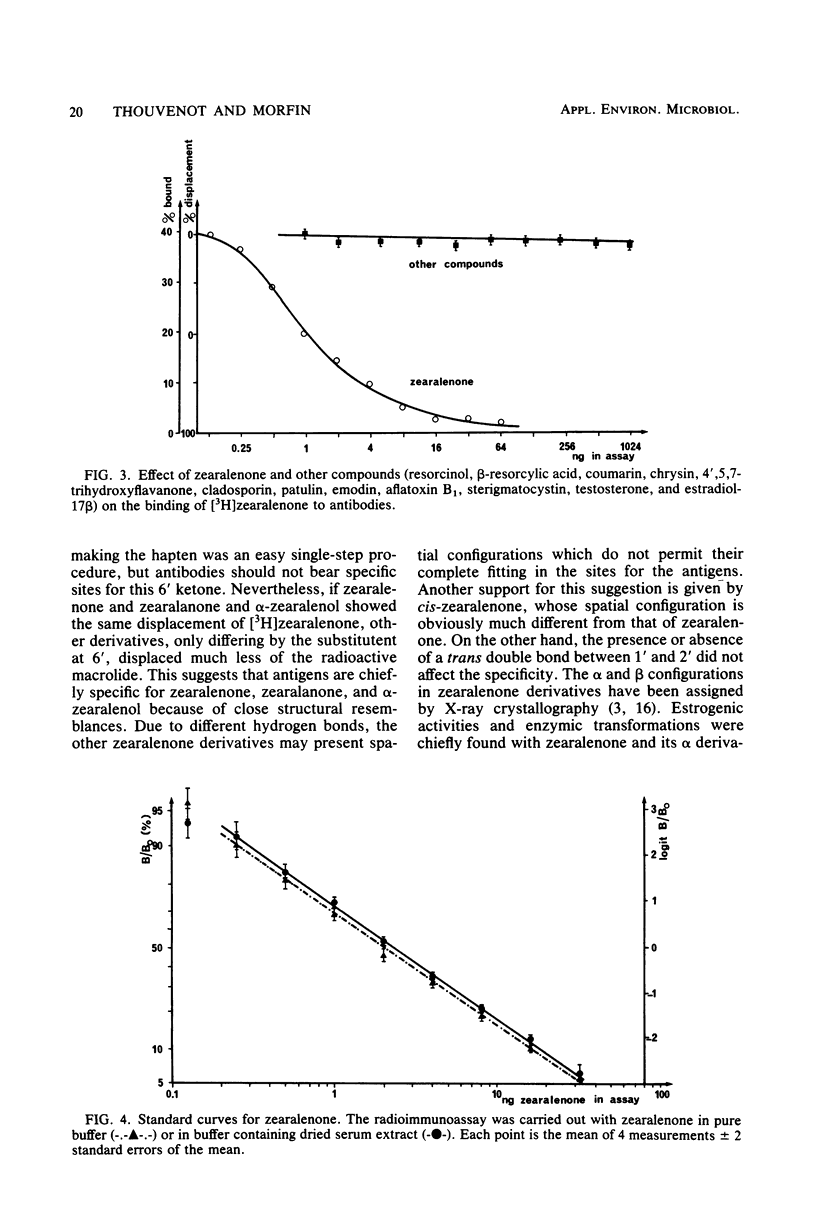
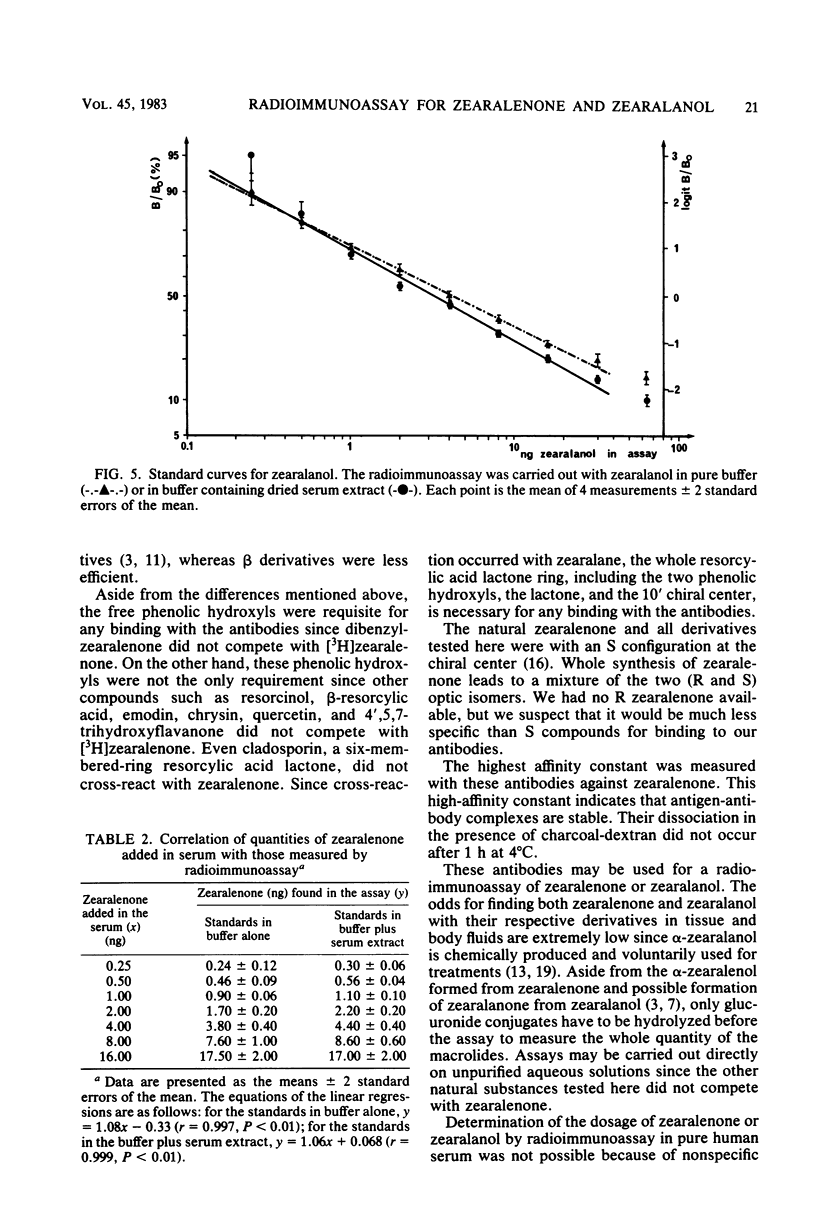
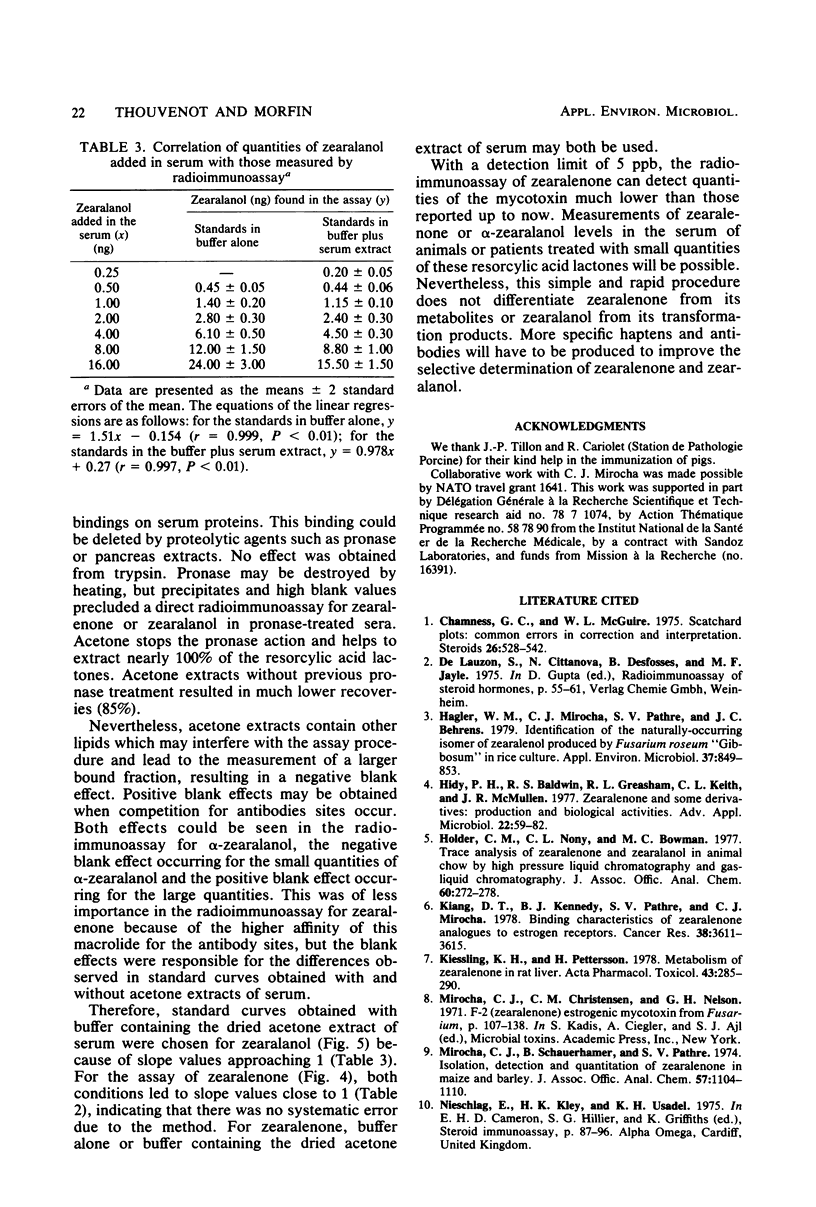
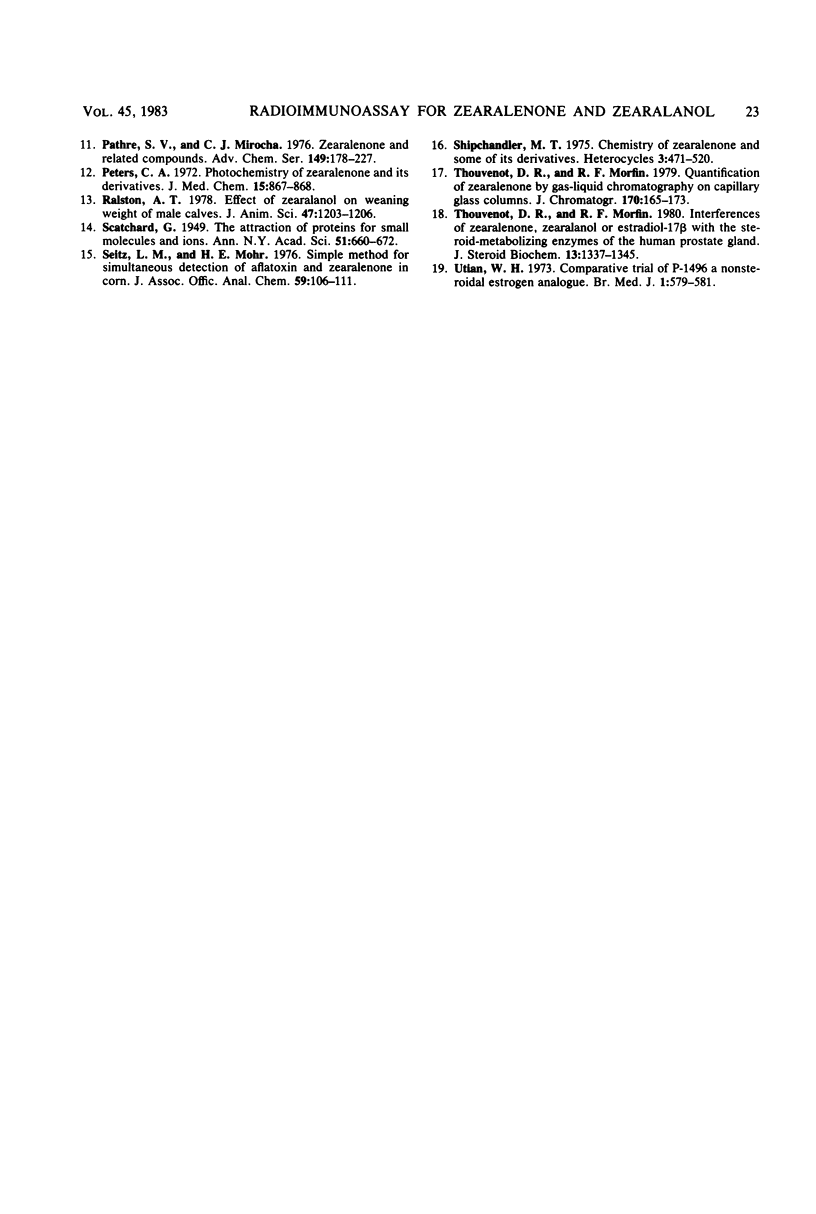
Selected References
These references are in PubMed. This may not be the complete list of references from this article.
- Chamness G. C., McGuire W. L. Scatchard plots: common errors in correction and interpretation. Steroids. 1975 Oct;26(4):538–542. doi: 10.1016/0039-128x(75)90073-2. [DOI] [PubMed] [Google Scholar]
- Hagler W. M., Mirocha C. J., Pathre S. V., Behrens J. C. Identification of the naturally occurring isomer of zearalenol produced by Fusarium roseum 'Gibbosum' in rice culture. Appl Environ Microbiol. 1979 May;37(5):849–853. doi: 10.1128/aem.37.5.849-853.1979. [DOI] [PMC free article] [PubMed] [Google Scholar]
- Hidy P. H., Baldwin R. S., Greasham R. L., Keith C. L., McMullen J. R. Zearalenone and some derivatives: production and biological activities. Adv Appl Microbiol. 1977;22:59–82. doi: 10.1016/s0065-2164(08)70160-6. [DOI] [PubMed] [Google Scholar]
- Holder C. L., Nony C. R., Bowman M. C. Trace analysis of zearalenone and/or zearalanol in animal chow by high pressure liquid chromatography and gas-liquid chromatography. J Assoc Off Anal Chem. 1977 Mar;60(2):272–278. [PubMed] [Google Scholar]
- Kiang D. T., Kennedy B. J., Pathre S. V., Mirocha C. J. Binding characteristics of zearalenone analogs to estrogen receptors. Cancer Res. 1978 Nov;38(11 Pt 1):3611–3615. [PubMed] [Google Scholar]
- Kiessling K. H., Pettersson H. Metabolism of zearalenone in rat liver. Acta Pharmacol Toxicol (Copenh) 1978 Oct;43(4):285–290. doi: 10.1111/j.1600-0773.1978.tb02267.x. [DOI] [PubMed] [Google Scholar]
- Mirocha C. J., Schauerhamer B., Pathre S. V. Isolation, detection, and quantitation of zearalenone in maize and barley. J Assoc Off Anal Chem. 1974 Sep;57(5):1104–1110. [PubMed] [Google Scholar]
- Peters C. A. Photochemistry of zearalenone and its derivatives. J Med Chem. 1972 Aug;15(8):867–868. doi: 10.1021/jm00278a028. [DOI] [PubMed] [Google Scholar]
- Seitz L. M., Mohr H. E. Simple method for simultaneous detection of aflatoxin and zearalenone in corn. J Assoc Off Anal Chem. 1976 Jan;59(1):106–109. [PubMed] [Google Scholar]
- Thouvenot D. R., Morfin R. F. Quantitation of zearalenone by gas-liquid chromatography on capillary glass columns. J Chromatogr. 1979 Feb 11;170(1):165–173. doi: 10.1016/s0021-9673(00)84248-x. [DOI] [PubMed] [Google Scholar]
- Thouvenot D., Morfin R. F. Interferences of zearalenone, zearalanol or estradiol-17 beta with the steroid-metabolizing enzymes of the human prostate gland. J Steroid Biochem. 1980 Nov;13(11):1337–1345. doi: 10.1016/0022-4731(80)90095-3. [DOI] [PubMed] [Google Scholar]
- Utian W. H. Comparative trial of P1496, a new non-steroidal oestrogen analogue. Br Med J. 1973 Mar 10;1(5853):579–581. doi: 10.1136/bmj.1.5853.579. [DOI] [PMC free article] [PubMed] [Google Scholar]


